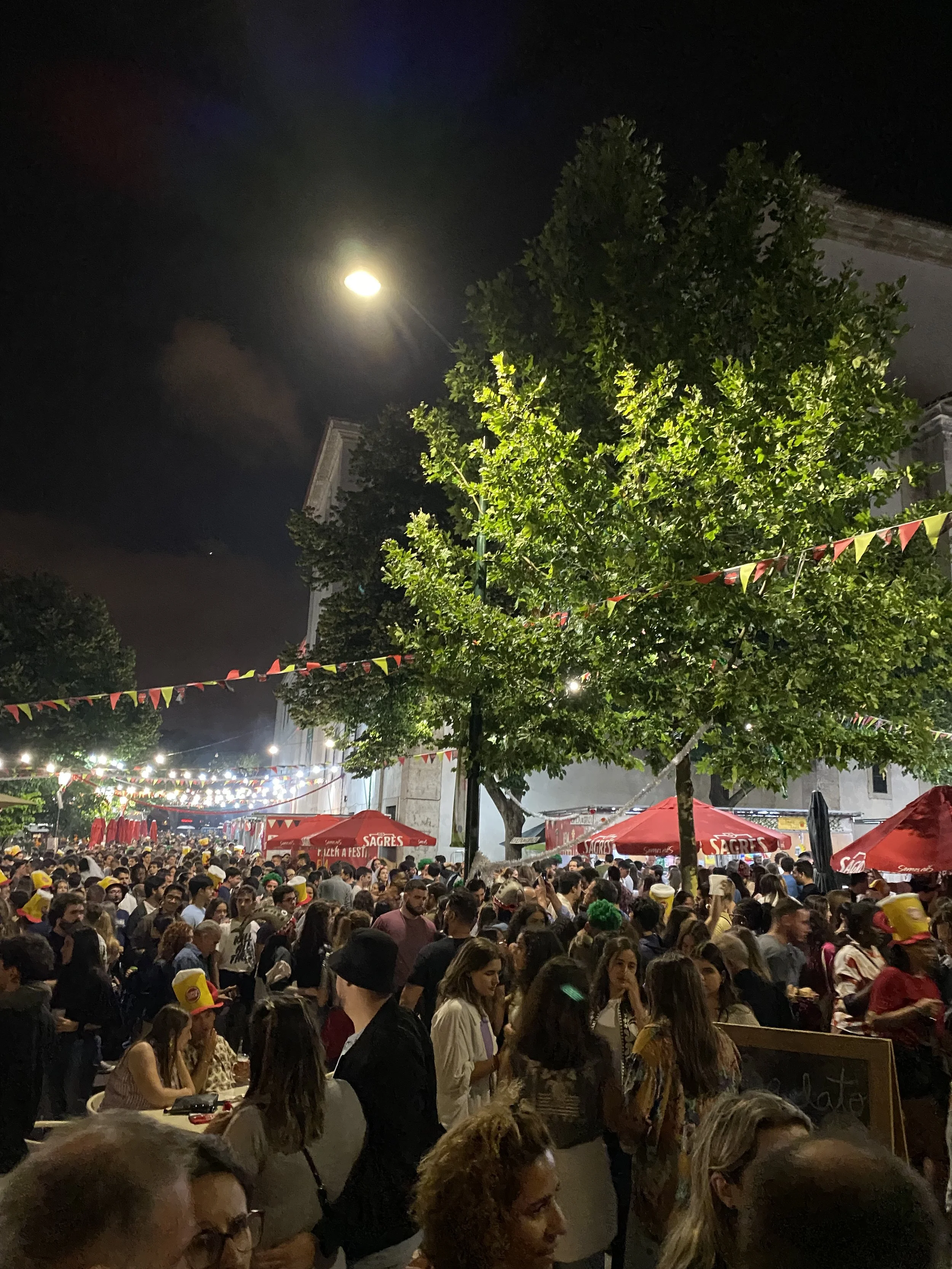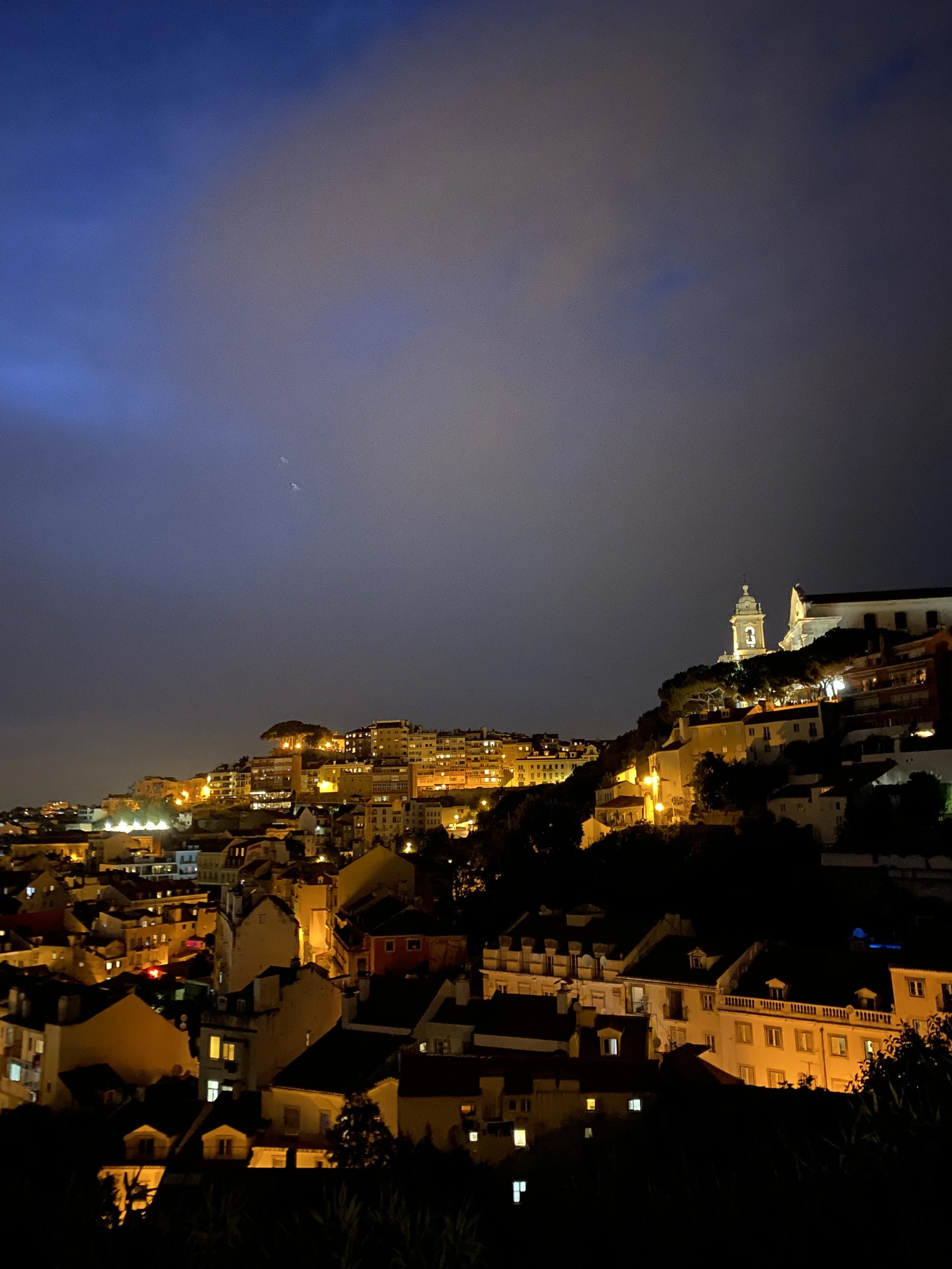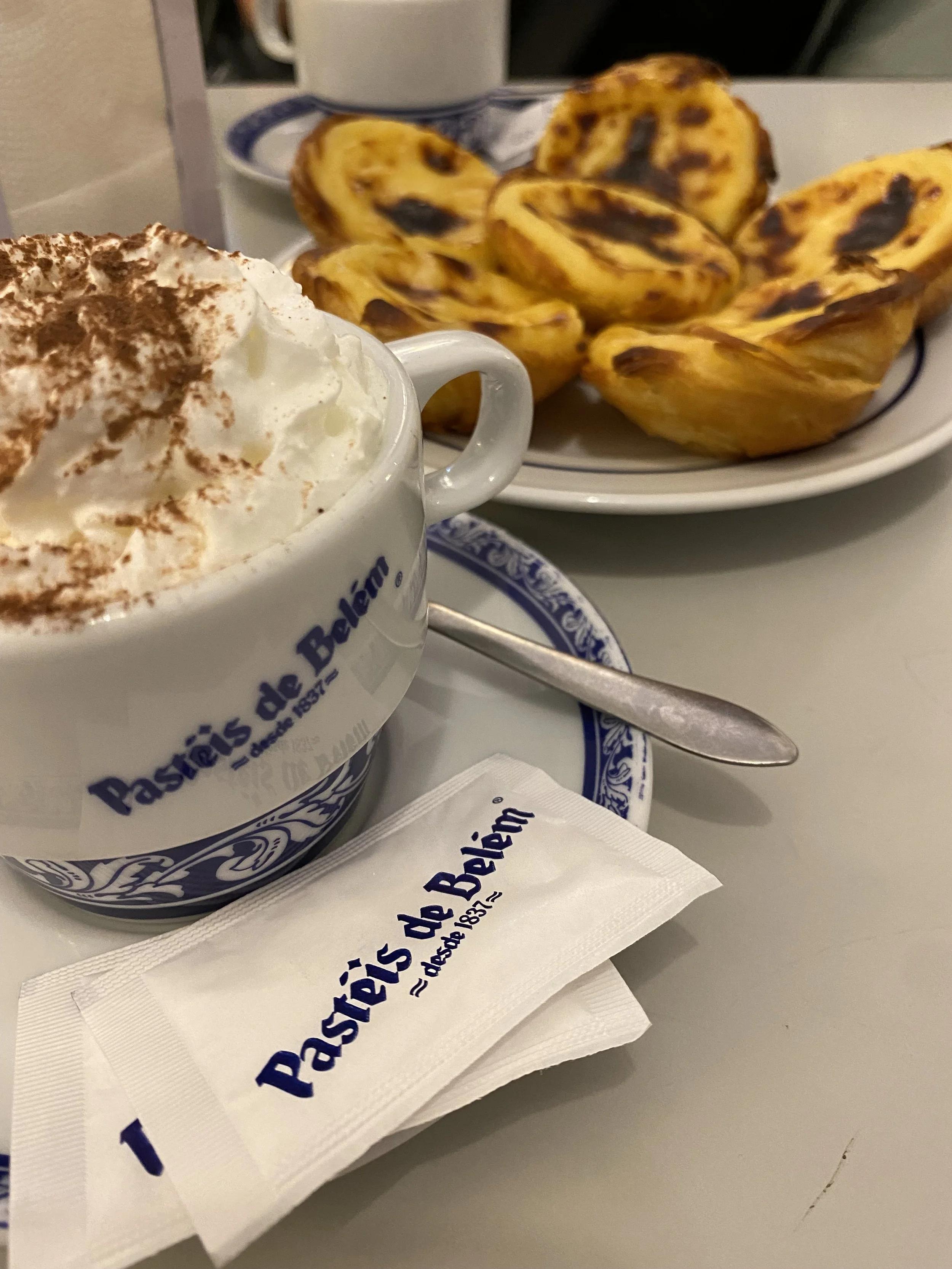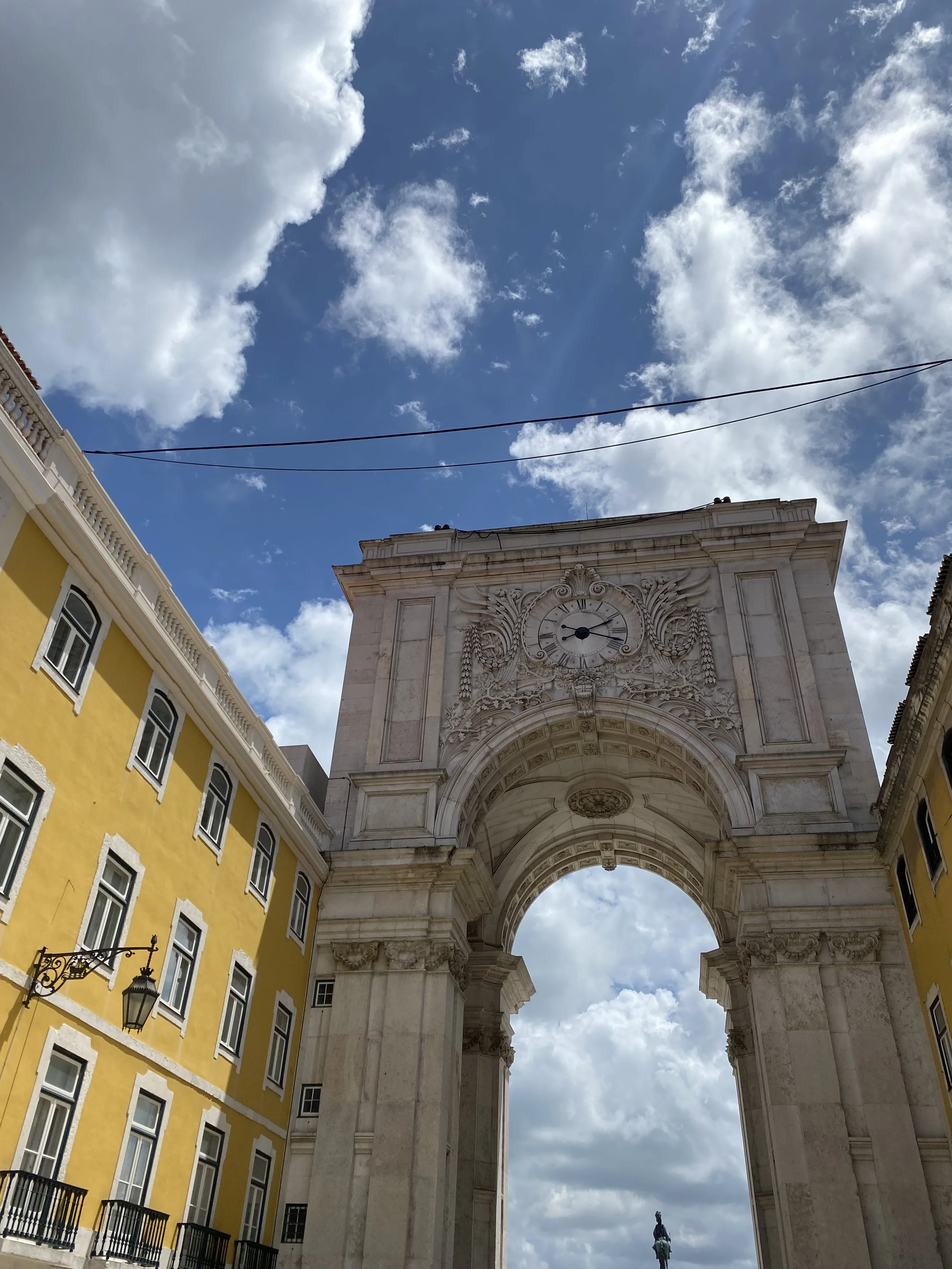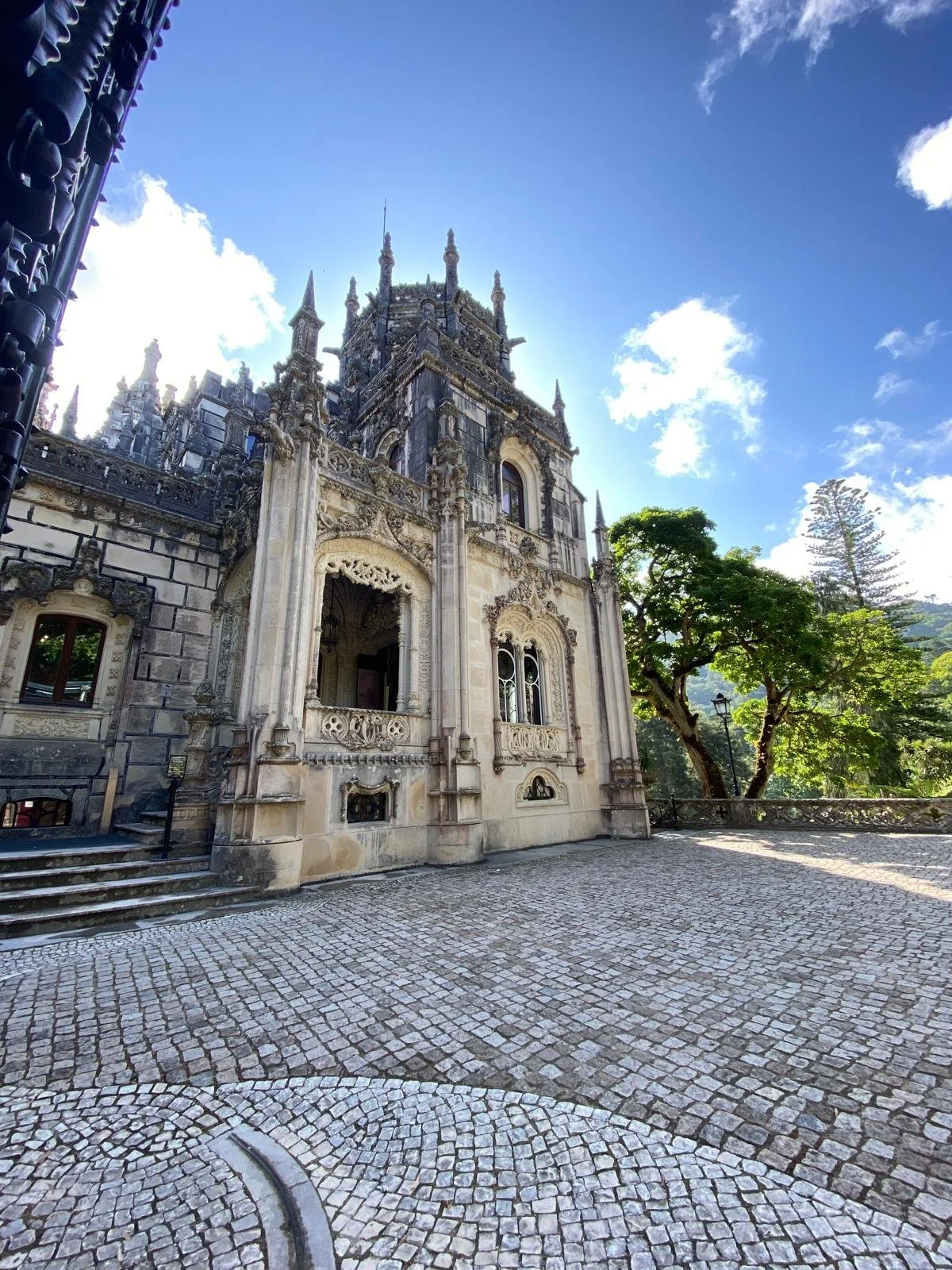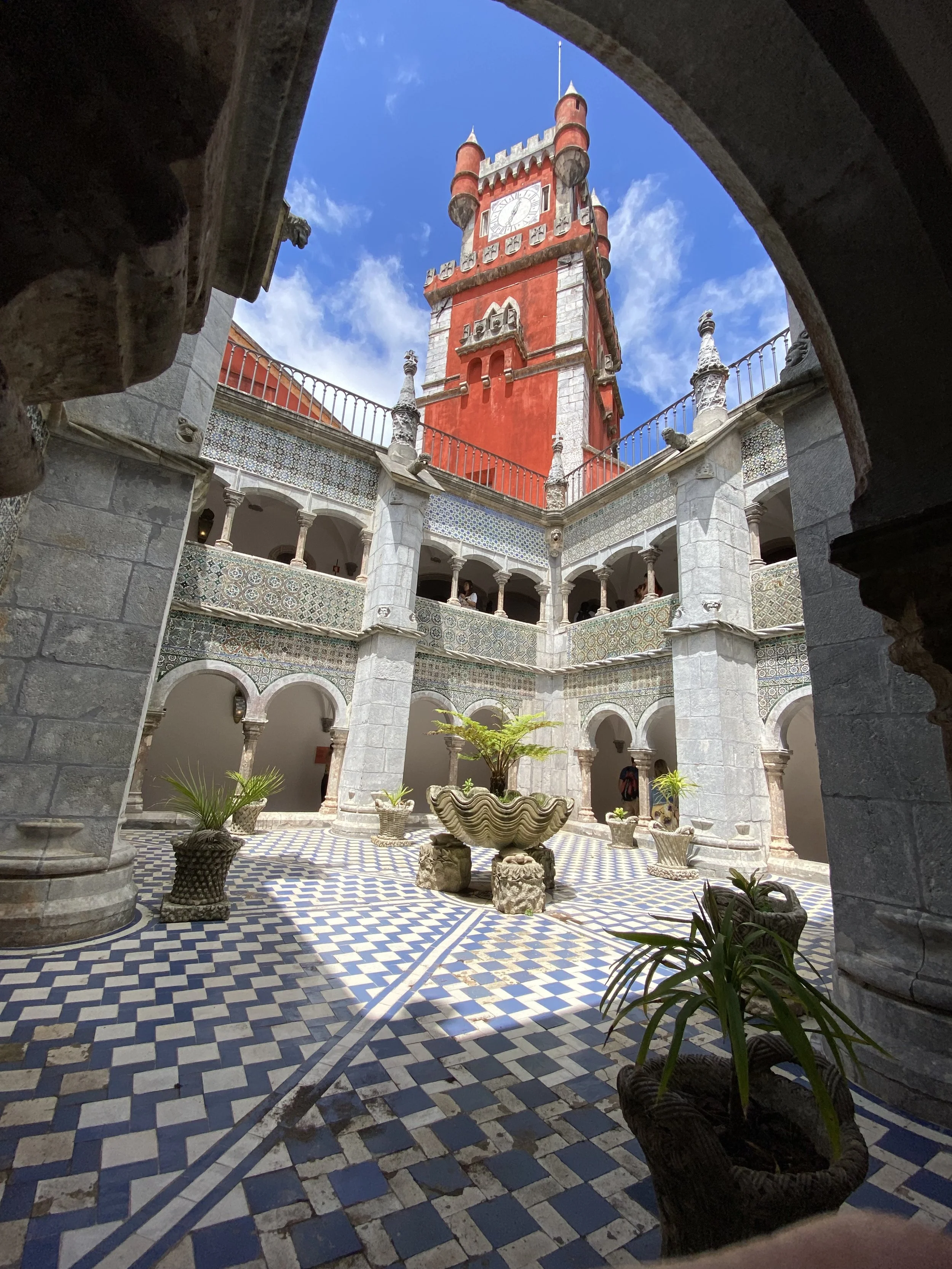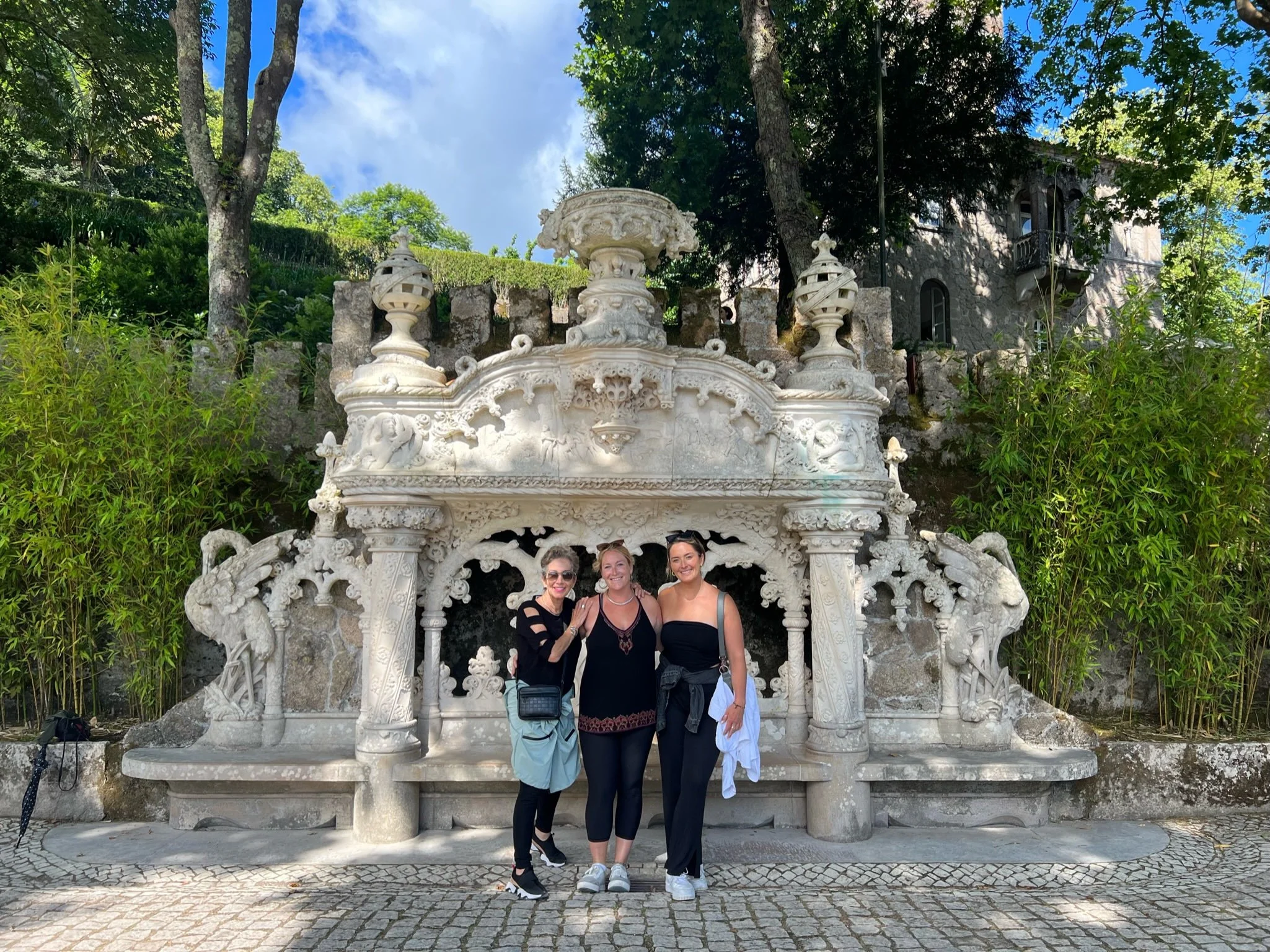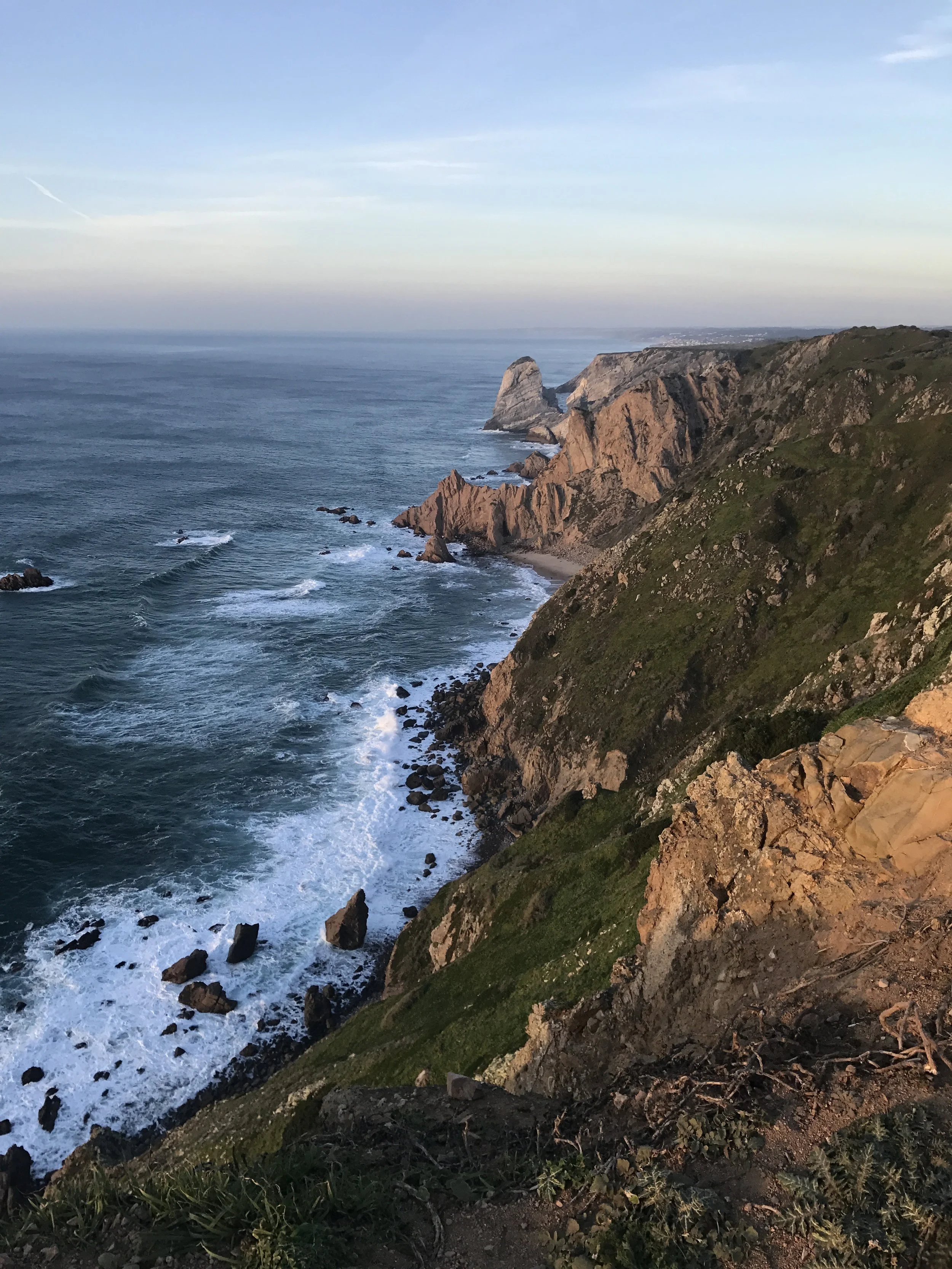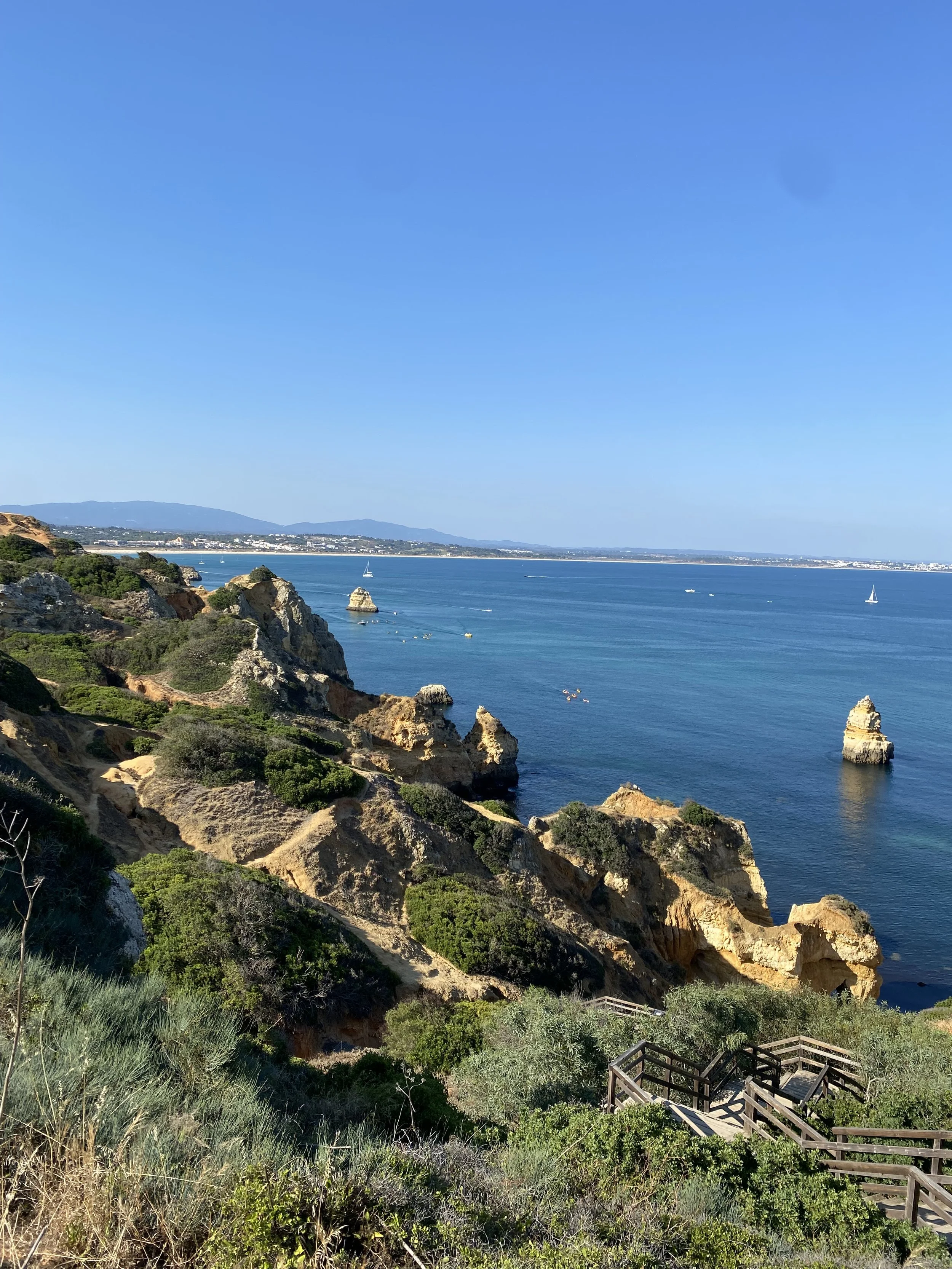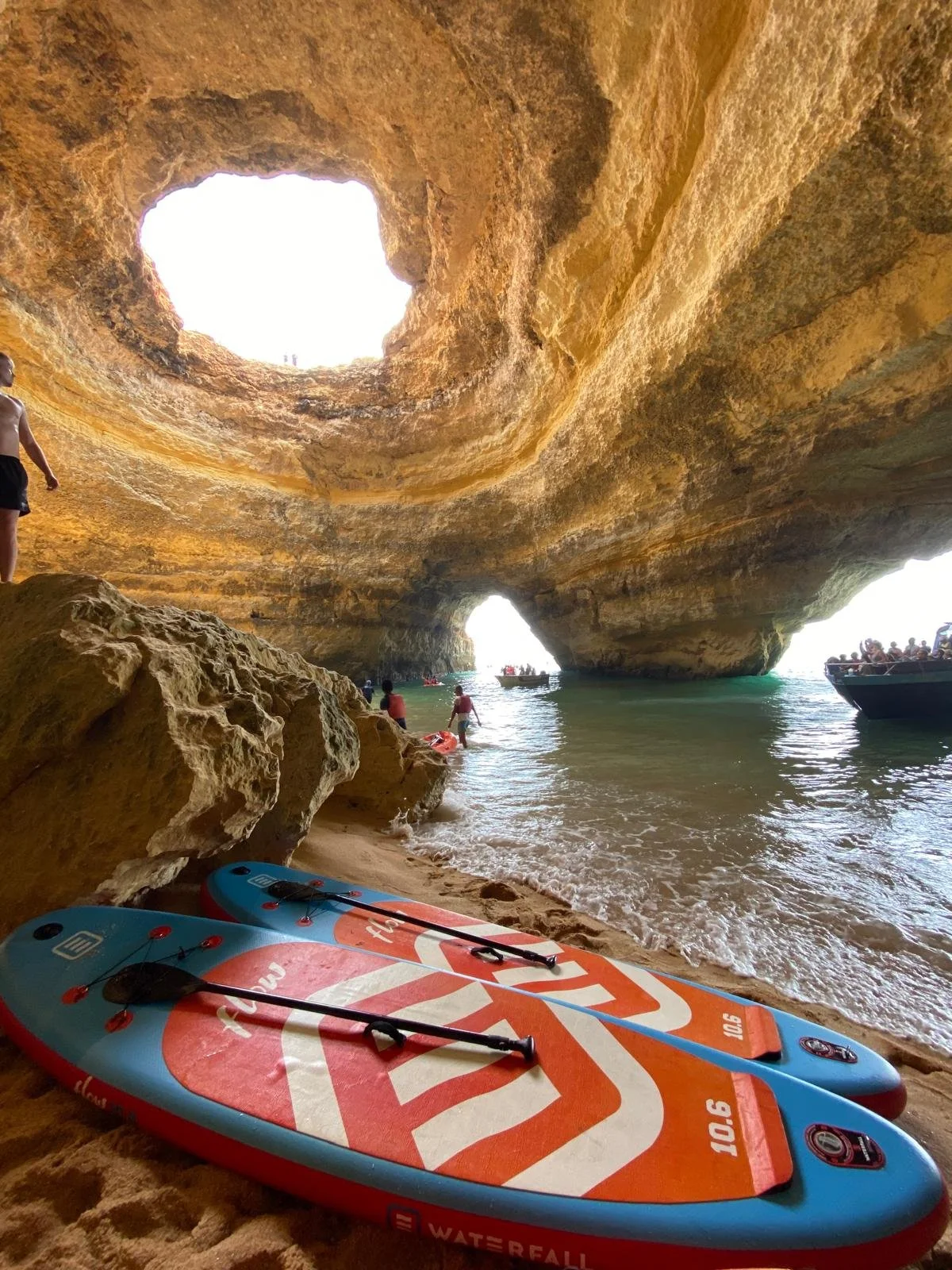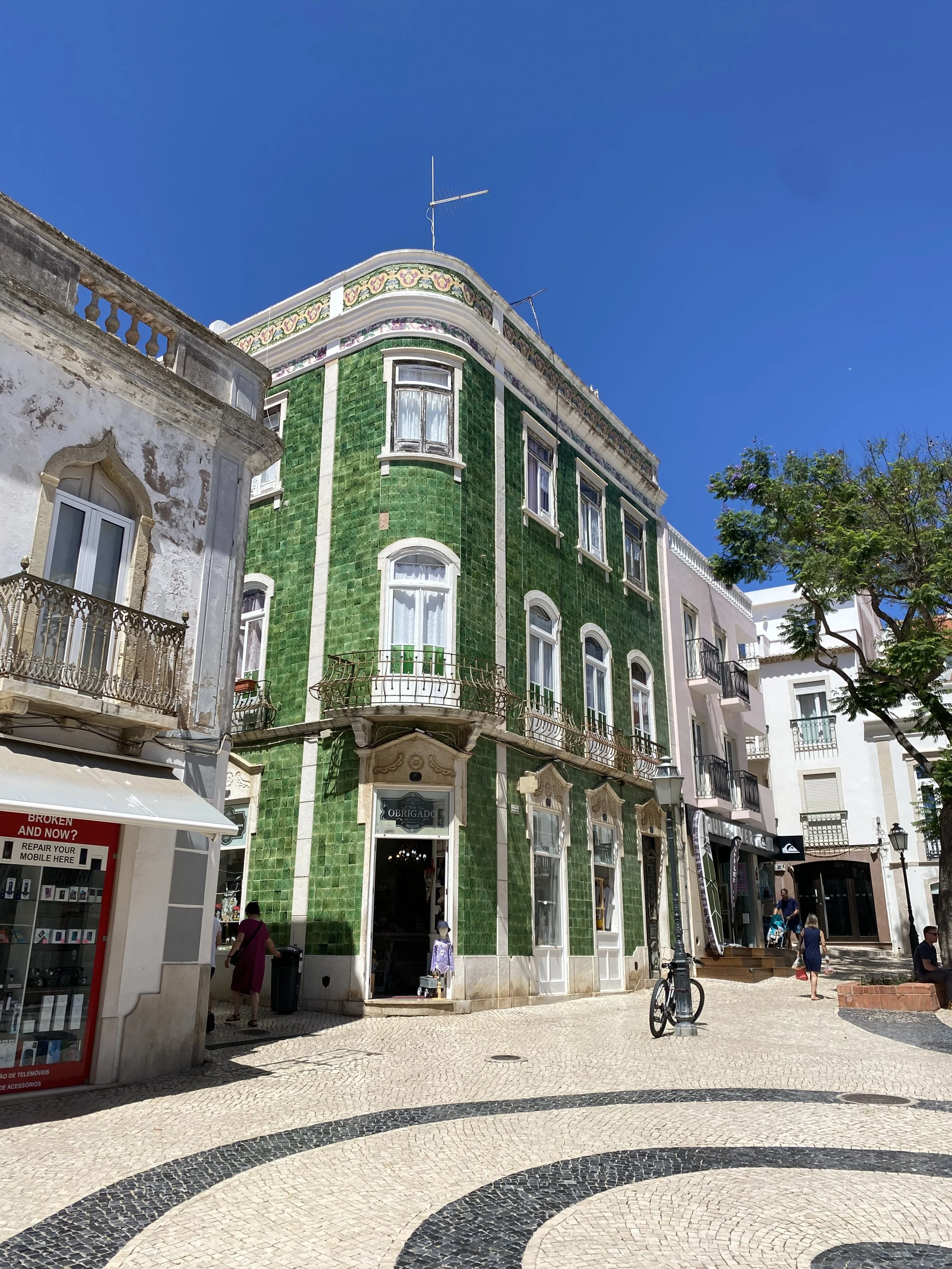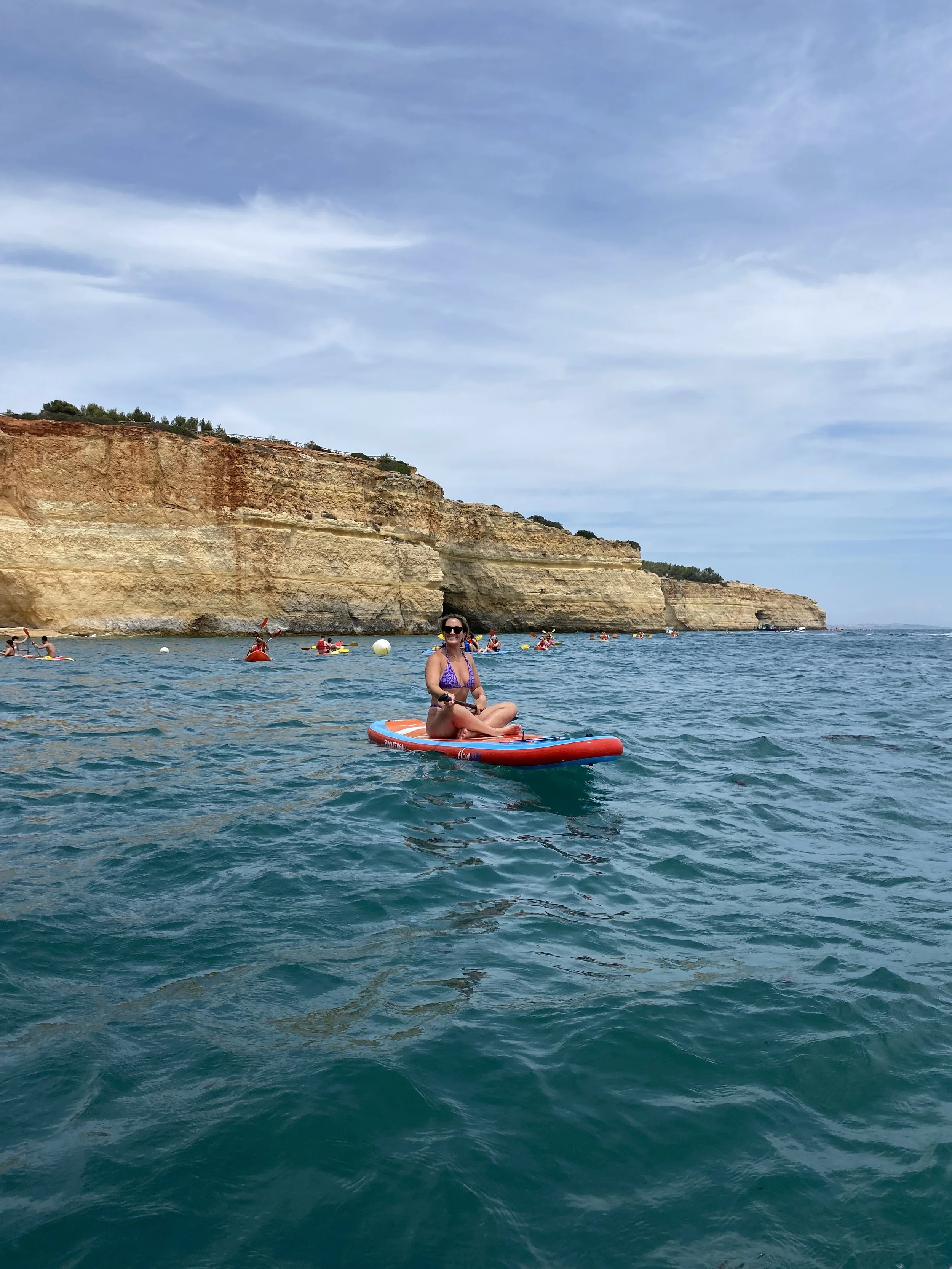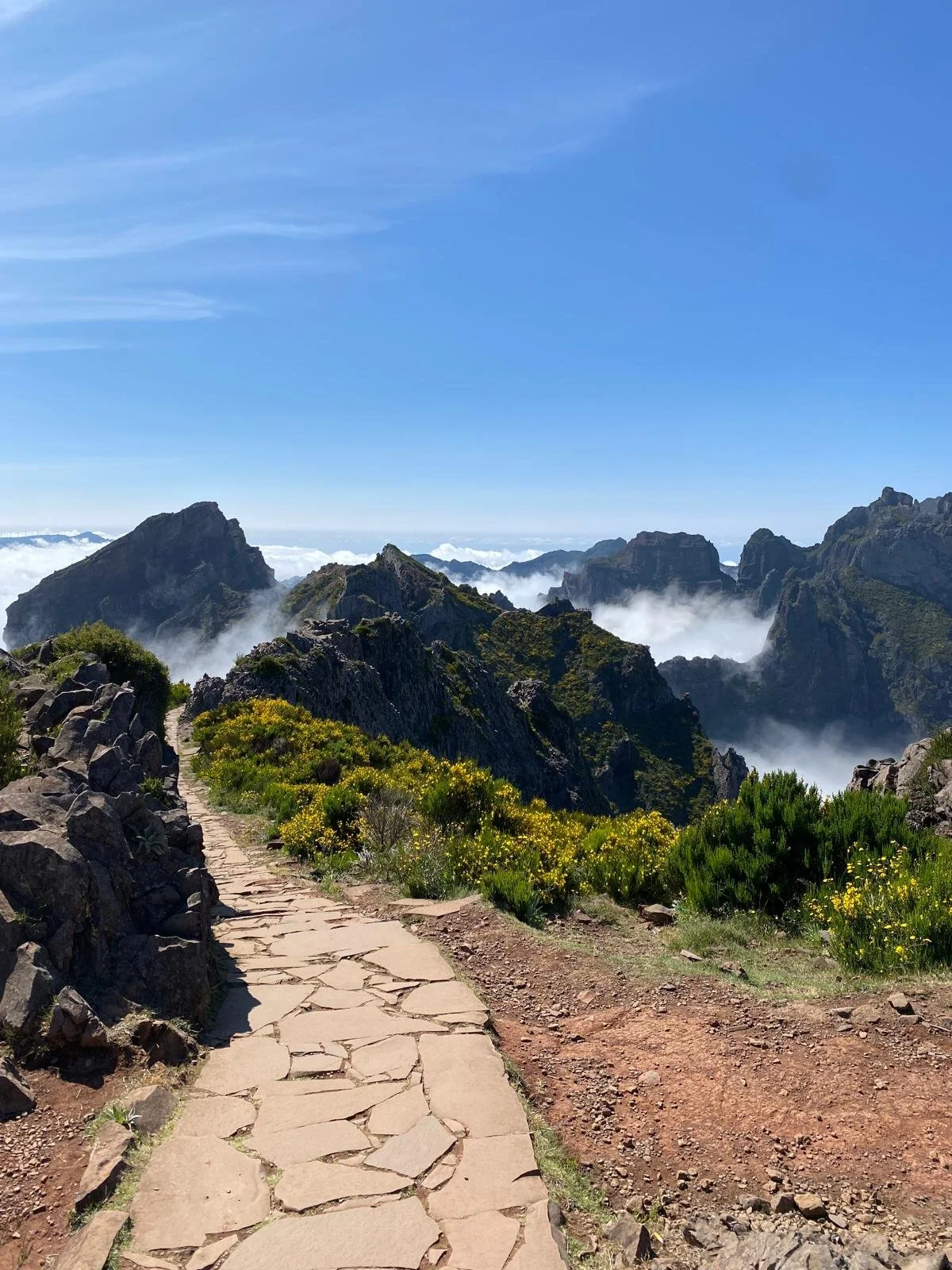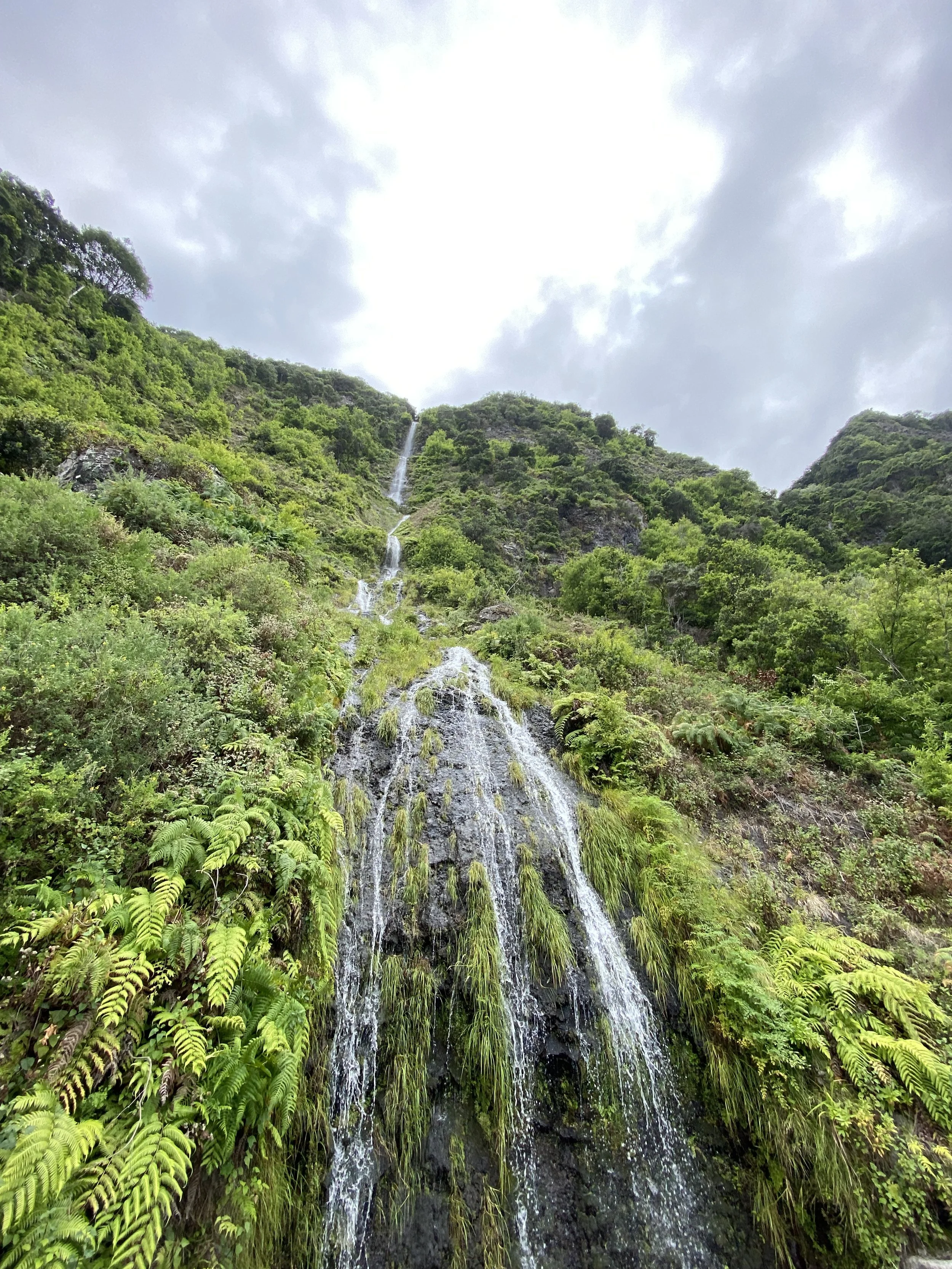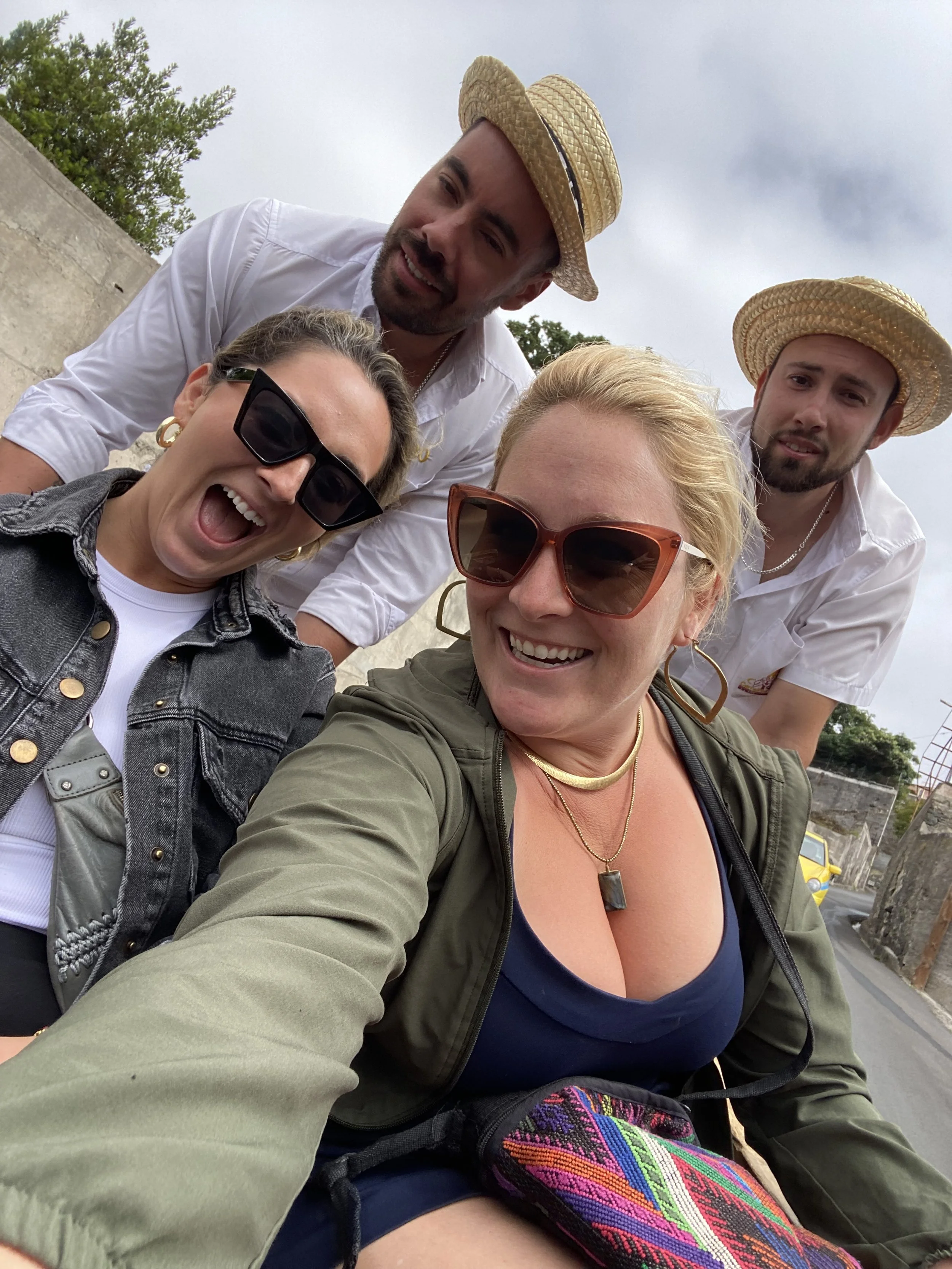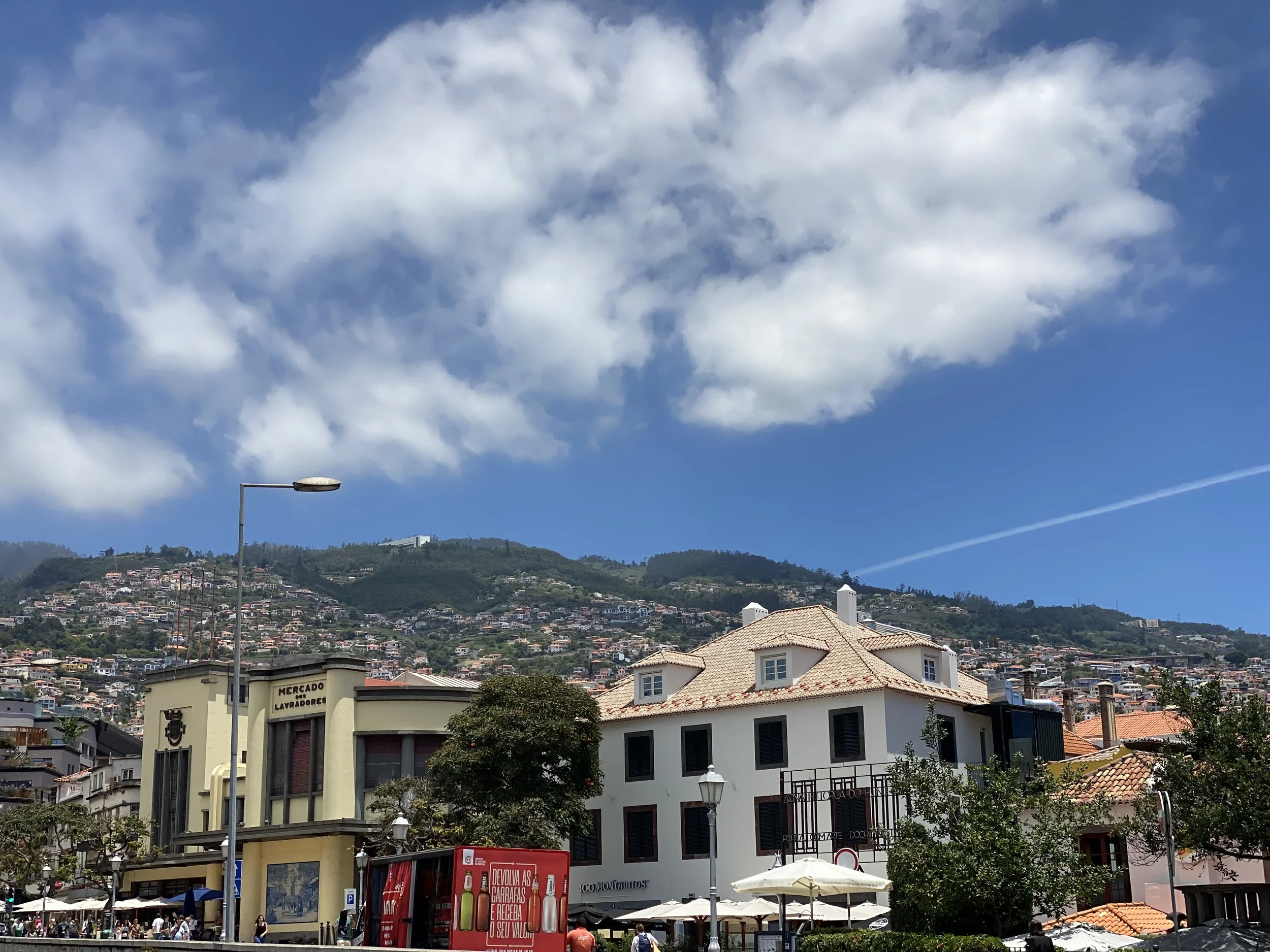Pastéis de Nata:
You can’t visit Lisbon without trying a Pastel de Nata, the famous Portuguese custard tart. The most famous spot for these tarts is Pastéis de Belém, where the tarts are made fresh and served warm. Arrive early because there's always a line!
Lisboa
Lisboa (Lisbon) is a city of charm, history, and culture, set against the backdrop of the Tagus River and characterized by its picturesque hills, narrow streets, and vibrant atmosphere. Known for its historic neighborhoods, incredible food, and lively nightlife, Lisbon offers a perfect blend of old-world charm and modern energy. It’s a city you can fall in love with, whether you’re wandering its iconic streets or taking in breathtaking views from its many miradouros (viewpoints).
Lookout Points (Miradouros):
Lisbon is a city of hills, and it’s known for its stunning panoramic viewpoints where you can catch a glimpse of the entire city. Some of the best viewpoints include:
Miradouro Senhora do Monte: A less touristy viewpoint that offers one of the best views of the city, especially at sunset.
Miradouro de São Pedro de Alcântara: A wide terrace offering great views of the city, including the Castelo São Jorge and downtown Lisbon.
Miradouro Santa Luzia
Miradouro da Graça
Miradouro das Portas do Sol
Castelo Sao Jorge
Bairro Alto:
Bairro Alto is Lisbon’s bohemian neighborhood, full of narrow streets, quirky shops, and a lively nightlife scene. It’s a place where the old and new collide, with hip bars next to traditional Fado houses. A few experiences to check out:
Arroz Doce Bar
Fado Music at Tasca do Chico: For an authentic cultural experience, head to Tasca do Chico, a small, intimate Fado restaurant, where you can enjoy live traditional Portuguese music.
Chiado:
Chiado is Lisbon’s cultural and artistic district, filled with theaters, art galleries, and classic cafés. It’s also the home of the Chiado train cars, quirky, classic trams that take you around the historical neighborhood. You’ll find plenty of shopping options and some of Lisbon’s oldest and most famous cafes, including the A Brasileira café, known for its association with poets like Fernando Pessoa.
Alfama:
Alfama is one of Lisbon's oldest neighborhoods, with winding, narrow streets that evoke the city’s Moorish past. It's home to some of the city's most iconic landmarks, including Castelo de São Jorge. Alfama is also the heart of Lisbon's Fado music scene—there's nothing quite like sitting in a traditional tavern, listening to Fado singers, and enjoying a meal of bacalhau (salt cod), one of Portugal’s favorite dishes.
Belém:
Jerónimos Monastery: A stunning example of Manueline architecture and a UNESCO World Heritage site.
Monument to the Discoveries: A striking landmark along the river, celebrating Portugal’s Age of Exploration.
Torre de Belém: A beautiful fortified tower on the Tagus River, once a lookout for protecting the city.
Praça do Comércio:
One of Lisbon’s most iconic squares, Praça do Comércio, also known as Terreiro do Paço, sits on the banks of the Tagus River. It’s surrounded by grand neoclassical buildings and is a central point for walking around the city, with plenty of cafes and restaurants offering beautiful views.
LX Factory:
The LX Factory is a creative hub located in a former industrial complex, offering everything from cool shops and trendy cafes to art galleries and street art. It’s a great place to explore, particularly if you’re looking for unique fashion or want to experience Lisbon’s modern creative scene.
Time Out Market:
The Time Out Market is a foodie's paradise, housed in a former market hall. Here you’ll find an array of food stalls serving everything from traditional Portuguese dishes to international cuisine. It’s the perfect place to sample local flavors and enjoy the lively atmosphere.
Pink Street - Pensao Amor
LuxFragil (night club with famous DJs)
Topo Martim Moniz
Day Trips:
Cascais: A charming coastal town just a short train ride from Lisbon. With beautiful beaches, a picturesque marina, and a historic center, Cascais is perfect for a day of relaxation by the sea.
Carcavelos: Known for its long, sandy beach and great surfing, Carcavelos is a popular spot for locals to unwind and enjoy the sun.
Festa de Santo António:
This lively festival on June 13th is one of Lisbon’s most important cultural events. Streets across the city are filled with massive street parties, music, dancing, and grilled sardines. It’s a great opportunity to experience Lisbon’s festive spirit, with neighborhoods like Alfama and Bairro Alto hosting the most vibrant celebrations.
Sintra
Sintra, a magical town nestled in the lush hills of the Serra de Sintra mountains, is one of Portugal’s most enchanting destinations. It feels like something out of a fairy tale, with its castles, palaces, and exotic gardens hidden amidst misty forests and dramatic cliffs. Known for its romantic and historic charm, Sintra is just a short drive from Lisbon, making it an ideal day trip for those looking to experience Portugal’s rich history, stunning architecture, and natural beauty.
Buy Sintra entrance tickets in advance - time slots sell out in advance
www.parquesdesintra.pt/en/plan-your-visit/opening-times-and-prices/
Quinta da Regaleira:
One of Sintra’s most captivating and mysterious landmarks, Quinta da Regaleira is a sprawling estate that feels like something out of a dream. The palace itself is an eclectic mix of Gothic, Renaissance, and Manueline architectural styles, set in a lush park filled with secret passages, grottos, and hidden symbols.
The Initiation Well (Poço Iniciático) is one of the highlights here—an inverted tower that leads underground, spiraling down to a subterranean world full of symbolism. The gardens are equally mesmerizing, with fountains, waterfalls, and winding pathways that invite you to explore. It’s a place steeped in mystery and one of the most photogenic spots in Sintra.
Pena Palace (Palácio da Pena):
Arguably the most famous of Sintra’s castles, Pena Palace is a fairy tale come to life. Perched on a hilltop, it combines Gothic, Renaissance, and Moorish architectural elements, making it one of the most colorful and visually striking palaces in Europe.
The palace was built in the 19th century by King Ferdinand II and is known for its whimsical design, with bright yellow and red walls, turrets, and decorative tiles. Inside, you can wander through rooms filled with period furniture, intricate wooden panels, and beautiful artworks. The surrounding Pena Park is equally stunning, with wooded trails, lakes, and lush gardens that make for a perfect afternoon stroll.
Castelo dos Mouros (Moorish Castle):
The Moorish Castle offers a fascinating glimpse into Sintra’s history, as it dates back to the 8th or 9th century, when it was built by the Moors. Though largely in ruins, it’s a must-visit for history buffs and those looking for dramatic views of Sintra and the surrounding countryside.
The castle’s thick stone walls and towers wind through the forested hills, and you can walk along the ramparts for stunning panoramic views of the town, Pena Palace, and the distant coastline. It’s a relatively peaceful spot with a strong sense of history, and the setting adds to its romantic, medieval atmosphere.
Sintra National Palace (Palácio Nacional de Sintra):
The Sintra National Palace is one of the best-preserved medieval royal palaces in Portugal. Located in the heart of Sintra’s town center, this palace dates back to the 14th century and was once the summer residence of the Portuguese royal family.
The palace’s signature features are its two massive chimneys that rise above the building, making it instantly recognizable. Inside, you’ll find beautifully preserved rooms with intricate tile work, opulent rooms like the Swans Room, and elegant Arabian-style courtyards. The palace also offers incredible views over Sintra, making it an excellent stop if you're interested in both history and scenery.
Cabo da Roca:
A short drive from Sintra, Cabo da Roca is the westernmost point of mainland Europe and offers some of the most breathtaking views on the continent. Standing on the cliffs, you’ll be greeted by dramatic panoramas of the Atlantic Ocean crashing against the rugged coastline. It’s a perfect spot for a sunset, as the sky often lights up in fiery shades of red, orange, and pink.
Lagos Old Town:
The town of Lagos itself is a charming blend of history and modernity. The Old Town is full of narrow cobbled streets, colorful buildings, and lively squares. It's a lovely place to wander, with plenty of cafés, shops, and restaurants to explore.
Lagos
Lagos, located in the stunning Algarve region of southern Portugal, is a charming town known for its dramatic coastline, golden beaches, and vibrant old town. This coastal gem offers a perfect combination of natural beauty, historic sites, and a laid-back vibe, making it an ideal destination for beach lovers, history enthusiasts, and outdoor adventurers.
Beaches:
Lagos is famous for its pristine beaches, surrounded by dramatic cliffs and crystal-clear waters.
Praia do Camilo: This small, stunning beach is one of the most Instagram-worthy spots in Lagos. It’s framed by golden cliffs and requires descending a steep staircase to reach the sand.
Praia da Balança: A quieter, less crowded beach, ideal for those looking for a more peaceful spot to relax and enjoy the sun. Surrounded by cliffs, it’s a perfect place to soak in the views and take a swim.
Ponta de Piedade: While not technically a beach, Ponta de Piedade is an iconic coastal spot near Lagos, known for its dramatic cliffs, grottoes, and rock formations.
Praia do Canavial: A slightly more secluded beach, accessible by a short walk from the main road.
Porto Mós Beach: A large, golden sandy beach with great facilities and a popular spot for swimming, surfing, and sunbathing. It has plenty of cafes and restaurants along the promenade, making it ideal for a relaxed day at the beach.
Praia do Pinhão: A small beach with calm waters, ideal for a relaxing swim. It's surrounded by high cliffs, which adds to its sheltered, peaceful atmosphere.
Praia Dona Ana: One of the most famous beaches in Lagos, Praia Dona Ana is known for its striking golden cliffs and crystal-clear water.
Barranco dos Canas: A hidden gem, this beach is often less crowded and surrounded by stunning cliffs.
Praia Grande: A long, wide beach with soft sand and plenty of space to relax.
Praia da Mesquita: Another quieter, more secluded beach located a bit further from the town center.
Marinha Beach (Praia da Marinha): Often ranked as one of the most beautiful beaches in the world, Praia da Marinha is a stunning stretch of golden sand surrounded by impressive cliffs and turquoise waters. It's perfect for swimming, sunbathing, or simply enjoying the jaw-dropping views.
Benagil Caves:
The Benagil Caves are one of the most famous natural attractions in Portugal. These incredible sea caves, with their otherworldly rock formations, are only accessible by boat, kayak, or paddleboard. The Benagil Cave itself is particularly famous for its "skylight" opening at the top, which allows sunlight to stream into the cave, creating a surreal, almost magical effect. Visitors can rent kayaks or take boat tours from Benagil Beach, just a short drive from Lagos, to explore the caves and nearby grottoes. If you're an adventurer, kayaking or paddleboarding to these caves is an unforgettable experience.
Maderia
Madeira is a stunning archipelago off the northwest coast of Africa, yet part of Portugal. The main island, also called Madeira, is often referred to as the "Island of Eternal Spring" due to its year-round mild climate, lush landscapes, and spectacular natural beauty. This mountainous island is a paradise for nature lovers, hikers, and adventure seekers, offering everything from dramatic cliffs and lush forests to picturesque coastal towns and pristine natural pools.
Pico do Arieiro:
At Pico do Arieiro, one of the highest peaks on Madeira (1,818 meters), you’ll find jaw-dropping panoramic views of the island’s rugged mountains and valleys. On a clear day, the views are absolutely stunning, and it's one of the most popular hiking starting points. For a real adventure, you can hike from Pico do Arieiro to Pico Ruivo, the highest point on the island, for an unforgettable experience through dramatic landscapes (the hike can take around 5-7 hours, depending on pace).
Mercado dos Lavradores (Farmers' Market):
Located in Funchal, the capital of Madeira, Mercado dos Lavradores is a lively market where you can experience the island’s rich agricultural heritage. It’s a great place to pick up fresh produce, including exotic fruits like passionfruit, banana flowers, and madeiran bananas. You’ll also find fishmongers selling fresh seafood, and the vibrant colors of the stalls make for a lively atmosphere and some excellent photo ops. Don't miss the madeiran wine stalls and try the famous bolo do caco (a traditional madeiran bread) or some local chorizo.
Rent a Car:
Madeira’s rugged terrain and scenic routes make it ideal for a road trip, and renting a car is the best way to explore the island at your own pace. From hidden viewpoints to remote villages and hiking spots, a car gives you the freedom to visit those off-the-beaten-path treasures. Plus, the roads are well-maintained, and there are plenty of scenic driving routes around the island.
Levada Walks:
Madeira is crisscrossed with an extensive network of levadas—irrigation channels originally built to bring water to the island’s dry regions. These walkways pass through some of the most scenic landscapes, including lush forests, steep cliffs, and even tunnels. A few notable levada walks around Funchal and beyond include:
Levada do Caldeirão Verde: A beautiful trail that takes you through forested landscapes to the Caldeirão Verde Waterfall.
Levada dos 25 Fontes: This famous levada takes you through the Laurisilva forest (a UNESCO World Heritage site) to the stunning 25 Fontes Waterfall.
Levada do Rei: Another fantastic route through lush valleys and towards hidden waterfalls.
These walks range in difficulty, so you can choose one based on your experience level and time. They are some of the best ways to immerse yourself in Madeira's beautiful nature.
Funchal Cable Car (Teleférico da Madeira):
A ride on the Funchal Cable Car is a must-do for incredible views over the capital, Funchal, and the Atlantic Ocean. The cable car takes you up to Monte, a hilltop area in Funchal, offering panoramic views of the bay, the city, and the surrounding mountains. It's a great way to see the island from a different perspective and is very accessible for visitors.
Toboggan Ride: Cadeiras de Correr do Monte:
After taking the cable car to the Monte district, don't miss the opportunity to experience a toboggan ride down the hills. The traditional Cadeiras de Correr do Monte ride is an exhilarating (and fun) descent down the winding streets in a wooden sled, steered by two local “drivers.” It's a fun and unique way to explore the area, and you’ll feel like you’re part of an age-old Madeira tradition!
Natural Pools:
Madeira has some beautiful natural pools formed by volcanic rocks and shaped by the Atlantic waves. These pools are perfect for a swim in clear, refreshing water surrounded by stunning coastal views.
Doca do Cavacas: These natural pools near Funchal are great for swimming, and there’s also a lovely terrace where you can relax after a dip.
Lido: Located in Funchal, Lido is a popular public swimming pool complex with natural seawater pools, perfect for families.
Porto Moniz Natural Swimming Pools: Situated on the northwestern coast of Madeira, these volcanic rock pools are incredibly picturesque and offer a wonderful swimming experience, especially with the dramatic backdrop of the Atlantic Ocean crashing against the rocks.
Waterfalls:
Madeira is often referred to as the “island of waterfalls,” thanks to its abundance of beautiful cascades. Some of the most notable waterfalls include:
Cascata dos Anjos: A scenic waterfall located in the northern part of the island near the town of Porto Moniz.
Lombinho Waterfall: Found in the lush Laurisilva Forest, this stunning waterfall is surrounded by green scenery, and the hike to reach it is equally beautiful.
25 Fontes Falls: A popular hike that leads you to a series of small waterfalls. The 25 Fontes waterfall is one of Madeira’s most famous cascades, and the surrounding nature is breathtaking.
Cascata do Bejo das Águas: A gorgeous waterfall located on the island’s eastern side, often less crowded than some of the others.
Água d'Alto: A picturesque waterfall located in the eastern part of the island, offering a tranquil and secluded spot.
Other Notable Spots in Madeira:
Pico Ruivo: The highest peak on the island, with some of the most spectacular views. For hiking enthusiasts, this peak is often combined with the Pico do Arieiro trail for a full day of trekking through Madeira’s highest mountains.
Cabo Girão Skywalk: One of the highest sea cliffs in Europe, Cabo Girão offers incredible views of the coastline and the sea below. The skywalk features a glass-floored platform, which gives you a thrilling view of the sheer drop to the ocean below.
Madeira Botanical Gardens: In Funchal, the Madeira Botanical Gardens are a peaceful retreat filled with exotic plants, vibrant flowers, and great views of the town and the ocean.
Monte Palace: A beautiful and peaceful spot in the Monte district, where you can visit the Monte Palace and wander around its lovely gardens filled with oriental-themed architecture and sculptures.


